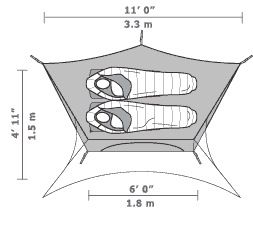We just got back from a great overnight wild-camping trip on the River Wye. Weather was good, but very windy on day one which made the mailes hard going at times, but it cleared beautifully in the evening for our camp. We knew heavy rain was coming early the next morning so set about getting good tarp-rigs up for some protection, which worked great. Here’s some photos from the trip.
Category Archives: Tarps
Solo Canoe Camp
Just returned from a Wye canoe and wild camp – my first ever solo trip of this kind. It wasn’t supposed to be solo but my buddy couldn’t make it last thing, so I went for it alone as I was already in the valley. Just a ‘one nighter’ although an amazing experience to do on my own – it didn’t feel lonely although I was alone.
Plenty of company from the local wildlife though. Highlights were observing amazing aerial displays from the Symonds Yat Peregrines, also as many as 4 Greater Spotted Woodpeckers sighted, loads of jumping fish, as many as 12 deer really near the river bank and the first ducklings of the season were out too.
A fairly chilly wind meant the fleece stayed on and at times the breeze in my face made it difficult to progress with Old Red without a 2nd paddler, putting in effort too. I nearly tipped the canoe by not paying attention to a large rock just under the surface, given away by the rippling water over it. At the time, I was letting the canoe lazily drift sideways and got a hell of a shock to find myself tipped sideways on the rock as Old Red struggled to stay upright, in the middle of the river. Luckily, I just managed to push myself off of the rock with the paddle before the situation got worse. There was a second or two when I thought I’d be tested in the cold water with an unexpected swim! Phew. Was a wake up call for me and I will learn from that. The tough nature of the Old Town made handling it on my own, on and off the car and in and out of the river easy enough. They can take quite a bit of dragging around, given their robust build quality.
No rain came at night but I had a pretty good tarp rig set up and had a great night sleep despite the owls, really close, doing their Tawny thing. The river was full of May Fly early evening flying up in huge numbers. No other canoeists were seen on the trip although I did get up at 6am and left my wild camp spot, with no traces at 7.30am so I was the early bird.
I had no matches, lighter or gas burners as back up – just good ol’ Kelly Kettle and a striker with a few bits of shavings and Birch bark in my pocket.
I collected a few bits of dry twigs on the journey down river. Pleased to say my fire lighting skills are fairly good now with a tidy little campfire going in no time giving hot water for tea and towards something to eat. Great bit of comfort, that. Same, in the morning. I didn’t bother taking a camp chair or stool. I just lay out on my sleeping bag by the fire until 1am listening to the wildlife and the Wye before getting in under the tarp. Cool.
It was a clear night too. I felt as comfortable as I would be in any hotel! I had everything I needed really and I didn’t have noisy people in the corridor at 2am trying to find their rooms and get their key cards to work! And anyway, who wants a ‘five star’ bill when you can have a ‘million stars’ for free?! Get Out, Stay Out.
Stoatally Different Canoe Trip…
On Saturday 24th, we took ‘Old Red’ (our newest canoe, an Old Town Discovery 158) on its 3rd trip, on another ‘over-nighter’ on the River Wye. The river was quite low with the recent fine weather and Spring has now properly arrived at last. We didn’t see the Peregrines this time but were treated to a lengthy sighting of a Stoat, hunting alongside the riverbank.
It moved quickly in the cover but we could see the distinctive white chest and black tip of the tail clearly – How to tell a Stoat from a Weasel? Just remember this old rhyme: A Stoat is Weasily recognised, as it Stoatally different from a Weasel!
I rigged up an improvised shelter with my tarp as we expected some rain at night and sure enough, at around 3am, the showers started.
The birdsong took over from the rain at 6am and it was incredible to hear this chorus again. The protective Canada Goose we’d seen on the last trip left us alone as we passed this time – he seemed a bit more relaxed about canoeists. Mrs Goose was still up on the nest as he eye-balled us from the other side of the river. Only a few Buzzards this time and the Owls were fairly quiet – and no visits from the Mink at camp – all in all, a Stoatally different trip!
Wild Camping
“Wild Camping” meaning camping out amongst nature away from a managed campsite, is one of the most fantastic and wild experiences you can have, without having to journey to Africa or the Arctic Circle. It’s the best way to really tune in to nature, experience the seasons changing and the wildlife around you, and for canoeing there’s no richer experience than paddling your own way along a river or lake, stopping to camp over night under the stars, and then waking up surrounded by the sights and sounds of nature before you move of on your journey the next day. But what are the rules and laws you need to know about?
When it comes to rivers, there’s an advantage in that as the river level changes it will expose the river bed, which makes it possible to have a “no-trace” wild camp. In practice you can wild camp on the shingle beaches anywhere along the navigable parts of River Wye (because landowners are so used to recreational paddlers) but this is also true on other rivers subject to local conditions. We’ve been doing it for 20 years on the Wye without ever having any problem even though technically, legally you probably need to seek permission from the landowner, but of course finding out who’s the landowner is not easy, but if you do know then of course stop to ask. Remember trespass is not an offence, only trespass causing damage.
If you can find an actual island in the river it’s case that’s counted as the river bed so no permission needed; but there’s no need to go hunting for an island, as it’s really no problem provided you always follow some basic rules:
- no damage
- no litter
- no noise
- no trace left

A Simple Wild Camp, with minimal impact.
Campfires & Firewood
Having a campfire is a key part of the experience of camping and wild-camping where it’s allowed, especially in winter to keep warm of course, and for cooking. Clearly conduct a risk assessment in terms of vegetation and fire risk and observe any local guidance. Don’t burn waste (plastic, paper wrapping, litter) – the fumes can be harmful and the residue may be impossible to clear up. Be aware when collecting firewood that deadfall wood is a key provider of nutrients to the ecosystem, via fungi and insects; don’t ‘harvest’ from one spot in woodland or on the vegetation on the riverbank – washed up driftwood is what should be used. Always burn off any logs before you go rather than leaving half-burnt wood around which lasts for years – don’t throw half-burnt logs into the river either as they’ll just float down and end up somewhere else. Don’t have a bigger fire than you need, extinguish the campfire with water, then spread and tread the ash well into the stones, until you can barely see anything, and you’re ready to go. One point: be aware that either wet stones or stones with air pockets in can explode in the heat of the fire – it’s only happened once to me in the last 10 years, but it can happen – take a first aid kit.
Water Levels
Remember water levels can change rapidly depending on weather upstream in the mountains, so be aware of whether the river is going up or down and keep an eye on the river level webcams before you go, and on the river itself and skies when you’re out. Be ready to change your plans if the weather changes significantly.
Camp Rules
Don’t fish either as you’ll be raise unnecessary and very real concerns of poaching; and don’t wild camp in an area that is clearly managed for fishing specifically, it’s not welcomed there.
Keep to no more than 3 people/boats in a group at one site, find separate sites if necessary. Use a swag or bivvy and tarp or a small natural-colour tent rather than a monstrous orange tunnel tent if possible! Best to keep a fairly simple camp and not spread all your gear around either, particularly anything that could look like litter – plastic bags, bottles etc. keep them stowed out of sight. Don’t stay more than one night in the same spot, because it’s not your land for a holiday – arrive late in the day and leave early.
Sometimes the landowner will come down to take a peek in the morning, or late at night, and if you follow the rules above you’ll get nothing more than a friendly wave or a chat about the river and the weather – they can see you are respecting the environment and their land, and just enjoying the outdoors.
(Necessary Disclaimer: we’re not legal experts so read up online yourself if you’re concerned and seek out the local knowledge in your area; publishing this guide doesn’t make us responsible in any way – enjoy the wilds of our wonderful country! Thanks.)
Baker Tent Hunt – the half-dome shelter
In addition to the full size campfire tent and lightweight versions we’ve looked at, one of the simplest ways to achieve a ‘campfire tent’ setup would be the ‘half dome shelter’.
Source: Period Shelters -http://poisonriverparty.homestead.com/Shelters.html
In fact this construct was used widely in woodland camping by the North Eastern native American populations. One such construction was shown in Ray Mears series on “Rogers Rangers” an exploration of how WIlliam Rogers led expeditions and raiding parties in the early british military campaigns in the Frontier country with Canada, fighting both the French and the opposing native tribes. The demonstration by a descendent of the local tribes showed how a half dome shelter would be built. Interestingly the structure of the frame would be made at the camp site, from materials found thereabouts, whilst the covering was made from wide sheets of birchbark, which being the most valuable material as well as extremely lightweight, would be carried from camp to camp – a new frame simply being built as required at the next location.
Ray shows how with a fire built out front the shelter is extremely insulating, and practical allowing easy access in and out, and the ability to cook under cover using the fire in front of the shelter. These are all characteristics of the “Campfire Tent” or “Baker Tent” we were looking for.
That episode showed a beautiful end result of this technique – I am keen to try this technique, but using a tarp instead of birchbark.
So in searching for a modern version of this ‘half-dome campfire tent’ i began looking into surprisingly fishing “bivvies” which typically do have this half dome shape, as well as a rigid or semi-rigid frame built in. There are many types of these bivvies on the market, with the key differentiating from our point of view being weight and b8ulk, as we will want to carry this in a canoe, as well as portaging where necessary.
So clearly some of the larger more heavy duty fishing shelters, or “carp bivvies” or “brollys” as they are also known in the world of course fishing are not suitable in this case. The most interesting I found were these two:
The Fox Evolution XS Shelter/Bivvi.
This has a rigid, interlocking hooped frame which interestingly stays in place when the shelter is collapsed, making setting up and taking down very quick and simple, as well as great resistance against the wind. Also importantly this one can be set lower in bad weather, another feature of Bill Mason’s campfire tents – that of being highly adjustable to the weather conditions. Here’s a pic:
(a good review here) The downside of course here is that its still quite heavy at 4.2kg (if you compare to a tarp/pole/line setup), but even more importantly its bulky at 1.9m long (!) and 11cm’s diameter size when packed.
All the fishing bivvi info you’ll ever need is here at http://www.bivvies.co.uk/
The Wychwood Rogue Shelter.
This is the most lightweight of the bivvi shelters, with simple shock-corded poles in place of more rigid frames, but again the ability to change the shape significantly from wide open and high at the front very low and enclosed in bad weather. The shelter is extremely lightweight, has good fixings and guy ropes and is very easy to put up (once you’ve tried a few times – at first its quite confusing!). So this one really began to get our attention and we purchase one on Ebay for an incredibly cheap price of just £25, compared to the normal price of about £48. It was a brand new and unpacked one…and in fact the chap who sent it out actually sent out 5 in one box not realising it was a group – I let him know and he arrnged for the others to be picked up – we’re an honest lot here.
So the Wychwood shelter in backyard and canoe trip test turned out be absolutely excellent – the only downside that the poles although light, because they aren’t designed for canoe camping as such are quite long at about 5 foot, rather than being made up of shorter sections- and that does make it a bit big or rather long in the boat, although its no real problem.
The Shelter when set up really does make exactly the half-dome ‘campfire tent’ shelter we were after, and even looks very much like the native american shelters that inspired the idea. It’s a fantastic shape and has only one downside I can see – which is faced into strong winds it can take quite a bashing and become unstable – but if you’re on good ground for pegging this hasn’t been a problem for me even in extreme conditions, lowering the front egde means you can position it carefully in the wind, to get some downforce in play as well.
On less good ground for pegs it can be more of an issue. And in fact on a winter camp last year what were the most violent gusts of winds I’ve ever experienced anywhere on 3 continents hit our camp for a short while, probably half an hour only. Fortunately the direction was favourable, as the shelter got buffeted in the back edge forcing the structure down rather than taking it skyward! With some stones to weigh down the back, some extra pegging to a big log and some crossed fingers, the shelter actually withstood this onslaught, however lying in the shelter with all hell breaking loose around me and snow starting to fall (sideways) I was forced to consider ‘what to do IF it was going to fail’. In fact with this shelter there’s a good option here, and one which is actually useful part of the set-up in good weather too: by simply removing the poles you are left with an excellent simple tarp, again with good fixing point and a slight dome shape that helps enormously when constructing a tarp shelter. So the solution would have been to collapse the poles and just cover the swag with a very lower tarp cover, down and out of the wind behind the canoe.
Since then things have changed and although I haven’t yet tried constructing a shelter using sticks with this tarp, I have used it with canoe paddles attached to the canoe for stablity and that really works well – then you simply take the small rolled up tarp part of the shelter and its extremely minimalist as well as being very effective in both wind and rain, with enough room for two people and gear to sit out of the rain.
“Backyard Test” of the Wychwood shelter canoe-tarp rig:
And in use for real on a canoe trip:
So there you have it – the Wychwood shelter is our recommendation for the half-dome campfire tent shelter and as a canoe-tarp rig; so it’s a great buy for the price.
read more in our “Baker Tent Hunt” series.
Military Swags – US Forces Bivvy
This is a kind of soldiers’ swag bag: the “Crysalis sleep system” – a US miltary issue bivvy bag made from a goretex-like material. It features a mozzie net built in a wire hoops to raise the cover up. OK it’s expensive at $300 USD but if the taxpayers are footing the bill while you keep them safe from attack then it’s no problem: you deserve to a) be camouflaged b) be safe from attack from any enemies while you rest and c) be comfortable in bad weather when those same tax payers are sitting at home in 3 season feather down duvets surrounded by fluffed up pillows and eating pizza.
more info see: US Elite Forces Gear.com
See also: Duluth Bedroll and Me ‘Ol Swaggaroo – the Australian Swag Bag.
Campfire Tent Hunt – Latest: The Bush Shelter
Update: See our latest test of the Green Outdoor full size Campfire Tent.
Baker Tent Hunt continues… In our hunt for the perfect Modern “Baker Tent” or camp fire tent we’ve looked at many different options from large heavy tents like the Oztent to simple lightweight tarp rigs and replica versions of the original 19th Century format.
The latest we’ve found is this very interesting design called simply the “Bush Shelter“. As well as the basic properties as a ‘camfire tent’ it has a couple of reasons it’s ideally suited to canoe camping. It’s similar to the MSR Fast & Light tent design we featured earlier in that it’s made of modern lightweight materials with a kind of ‘stretched’ format that creates it’s internal space and it’s essential canopy by clever angle’s of material and guy ropes:

Also like the MSR you’ll this one uses trekking poles or ingenioulsy canoe paddles to hold the structure up. Described as “a lightweight, 2 person shelter that can be easily pitched using walking poles or canoe paddles. Front opening to allow maximum connection with the surrounding countryside, with a front canopy over the opening and a sewn in groundsheet for additional protection.” With those advantages for canoists specifically (making use of your paddles, and it’s overall lightwieght and compact design, whilst fulfilling the basic requirements of our Baker Tent Hunt, this is a very promising looking tent and currently a great purchase from www.greenoutdoors.co.uk at only £99 reduced from £149 at time of writing which is fantastic price for an unusual specialist tent like this.
Full details, spec and photo gallery (you need to see this! it all makes sense when you see the photos) here.
Where to Buy An Australian Swag in the UK?
[Update: the new Wynnchester Australian Swags are now available to buy online from www.australianswags.co.uk – see latest post.
It’s surprisingly hard to get hold of a real swag in the UK. I inherited my Razorback swag from my wife’s family when we were living Down Under several years ago: that’s the brown one below and shown in our main post about swag-camping here (and you’ll see it pop up all across this site as it’s been my main outdoor accommodation for ages now – I haven’t used a tent for 7 years…).
There’s a lot of swags available on Ebay, in Australia see here http://shop.ebay.co.uk/i.html?LH_AvailTo=3&_nkw=swag+canvas – worth a look but the postage is pretty heavyweight – but great for looking at the real Aussie swags that are available over there: lots of different shapes and sizes.
Update: Another company based in Devon also sells Australian style swags – they are made in the UK unlike the imported ones above, but are based faithfully on the original Australian designs – see http://www.wruffit.co.uk/ for details:
[Edit: Seems that Wruffit are no longer trading… website has been down for a long time and no answer on their phone number – so one less place to buy a swag now!]
Baker Tent Hunt: Get Out and Stay Out… in your own Backyard
Update: See our latest test of the Green Outdoor full size Campfire Tent.
The Baker Tent/Campfire Tent search continues… Evening Tea under the Tarp… Kelly Kettle fires up – wish I bought the bigger one though as the small 1pt version is fiddly to light and get going; next choice for me is an Eydon Kettle, the 2pt “Popular” model looks good according to reviews on SOTP (www.songofthepaddle.co.uk). But the Brew is good once it’s ready.
After tea the light started to dim, chopped some logs and got the firepit going (this is an old chiminea that fell over and broke during a storm: it’s much improved now!
The wind picked up a bit once the sun went down, giving the tarp a bit of a test as we’re up on a hillside facing the prevailing wind. The campfire tent / tarp rig stood up perfectly as expected, securely anchored to the canoe behind. Such a simple set up too: it’s easy to raise or lower the side walls dependent on the weather, using sticks of the right height to prop up the wings.
I’m completely happy with this rig now as the perfect Campfire Tent and simple canoe shelter: it packs up tiny with no poles needed ( I hate threading shock-corded poles in the dark ;-), sets up in under 5 mintes nd provides great cover even in storms with the option of rigging it low over the canoe. And as an open camp-fire style tent for one its fantastic, you really feel your open to the elements and the views and sounds of nature around you. Why go outdoors only to lock yourself in inside a little canvas room! My Baker Tent Hunt is over.
As it got dark the Owls came out – I sat listening to their calls for an hour, back and forth between a male and female. At times they were so close I was sure I would see them – I’m convinced now that they’re invisible! They’re Tawny Owls and that classic Twit-Twoo is surely one of the great experiences of being outdoors at night.
Climbed into the swag at 11am and slept soundly with just the gentle flapping of the tarp against the canoe and more owl noises echoing through the air. Tomorrow we work, but felt I made the most of an average evening at home! If you can’t get to the river, at least “Get Out and Stay Out”, even if it’s in your own back yard!
Baker Tent #1 – In search of the Modern Camp Fire Tent
UPDATE: This tent is no longer available. For a similar modern and ultra lightweight ‘Baker Tent’ tent see our “Bush Shelter” review, part of our “Baker Tent Hunt“.
This looked promising as a lightweight
modern campfire tent: The Mountain Sports Research (MSR) Fast and Light Tent:

Specifications:
* Capacity: 2 people + gear
* Floor + Vestibule Area: 37 + 14 sq. ft./3.4 + 1.3 sq. m
* Interior Peak Height: 42 in./110 cm
* Minimum Weight: 3 lbs./1.3 kg
* Packaged Weight: 3 lbs. 7 oz./1.6 kg
The MSR Fast and Light Tent is the pioneering single-wall tent provides all the protection and living space of a large tent, plus the ventilation, compactness, and weight savings of a tarp shelter.
The U.S. made tent is priced at a reasonable £169.00 (special offer) and is available from www.completeoutdoors.com


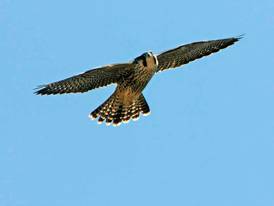
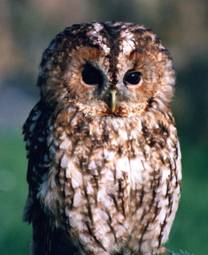

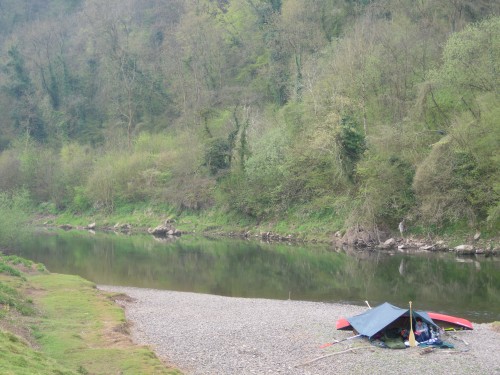

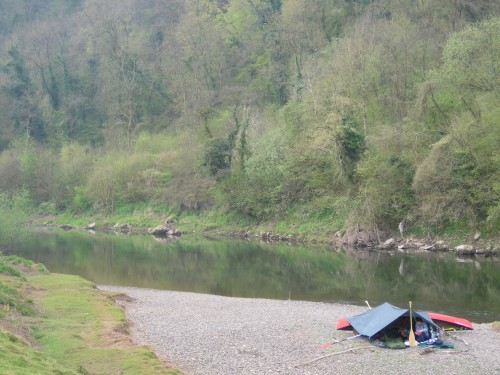
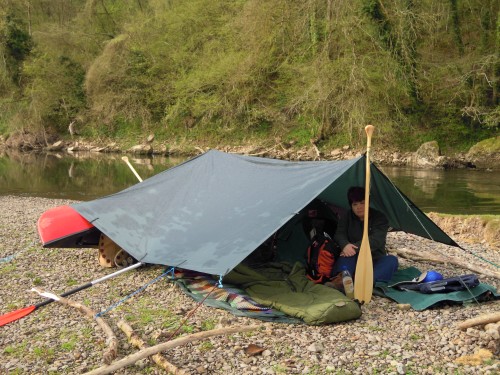
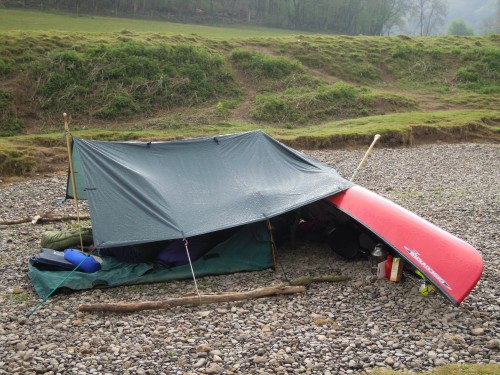
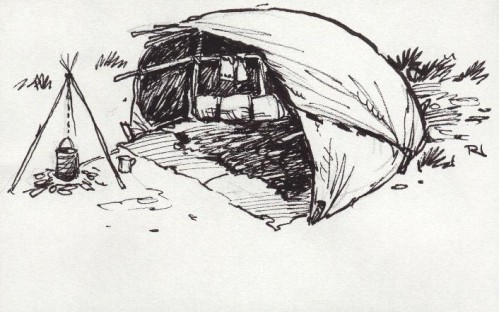
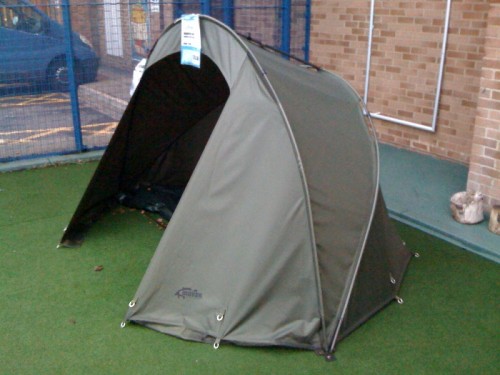

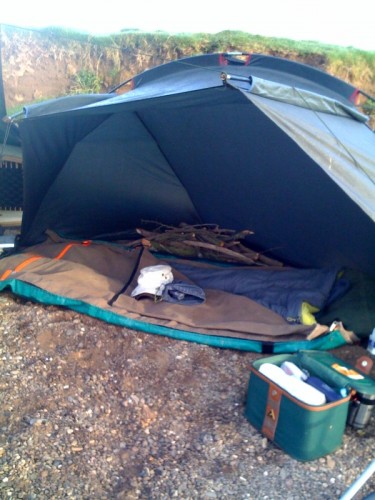
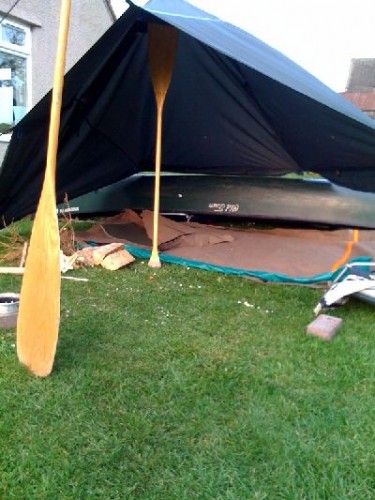
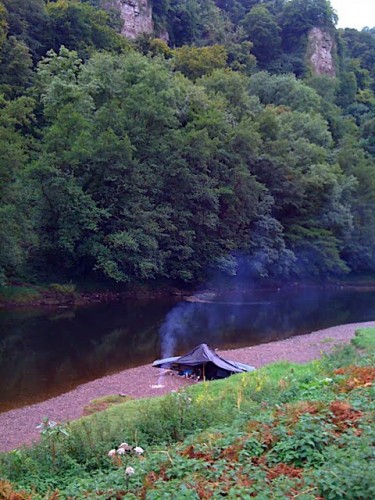
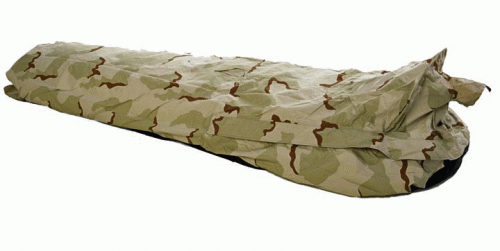
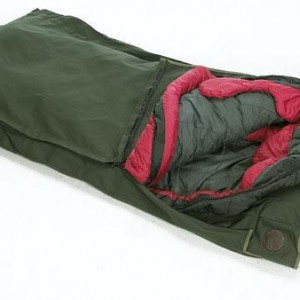

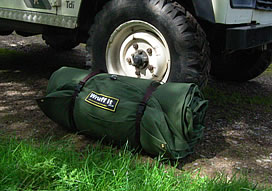
![Reblog this post [with Zemanta]](http://img.zemanta.com/reblog_e.png?x-id=250f17cd-9fc7-44ad-974f-afebc49f1784)





